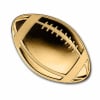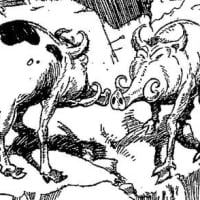Welcome to the Hardcore Husky Forums. Folks who are well-known in Cyberland and not that dumb.
George Brett and the pine tar incident

DerekJohnson
Administrator, Swaye's Wigwam Posts: 70,496 
Comments
-
Yankee killer
-
-
I think Brett wins that over Junior rather easily if it's a contest. He had multiple playoff series against the yanks and crushed it, including the iconic ALCS winning homer off of Gossage in 1980.DerekJohnson said:
-
Brett lost multiple playoff series to the Yankschuck said:
I think Brett wins that over Junior rather easily if it's a contest. He had multiple playoff series against the yanks and crushed it, including the iconic ALCS winning homer off of Gossage in 1980.DerekJohnson said:
Like Junior he had one win -
The Royals lost to the Yankees. Brett held up his end every time, just as he did in the WS loss to Philly and the win over the Cards.RaceBannon said:
Brett lost multiple playoff series to the Yankschuck said:
I think Brett wins that over Junior rather easily if it's a contest. He had multiple playoff series against the yanks and crushed it, including the iconic ALCS winning homer off of Gossage in 1980.DerekJohnson said:
Like Junior he had one win -
Not to diminish what Junior did in 95. Pretty sure he hit five homers in that series. That's pretty good.
-
That's what got him the coverchuck said:Not to diminish what Junior did in 95. Pretty sure he hit five homers in that series. That's pretty good.
Had a homer in game 5 to close the gap -
It's funny though. Edgar's heroics in that series and the image of Griffey sliding in with the winning run seem to overshadow that feat in most people's memory, including mine.RaceBannon said:
That's what got him the coverchuck said:Not to diminish what Junior did in 95. Pretty sure he hit five homers in that series. That's pretty good.
Had a homer in game 5 to close the gap -
Is that a rule with no purpose? I can't imagine that pine tar would increase the ball's flight off the barrel of the bat. Seems so inconsequential, unless I'm missing something.
-
Here comes the clubhouse lawyercreepycoug said:Is that a rule with no purpose? I can't imagine that pine tar would increase the ball's flight off the barrel of the bat. Seems so inconsequential, unless I'm missing something.
 https://www.youtube.com/watch?v=gbEHAsZxRYo
https://www.youtube.com/watch?v=gbEHAsZxRYo
